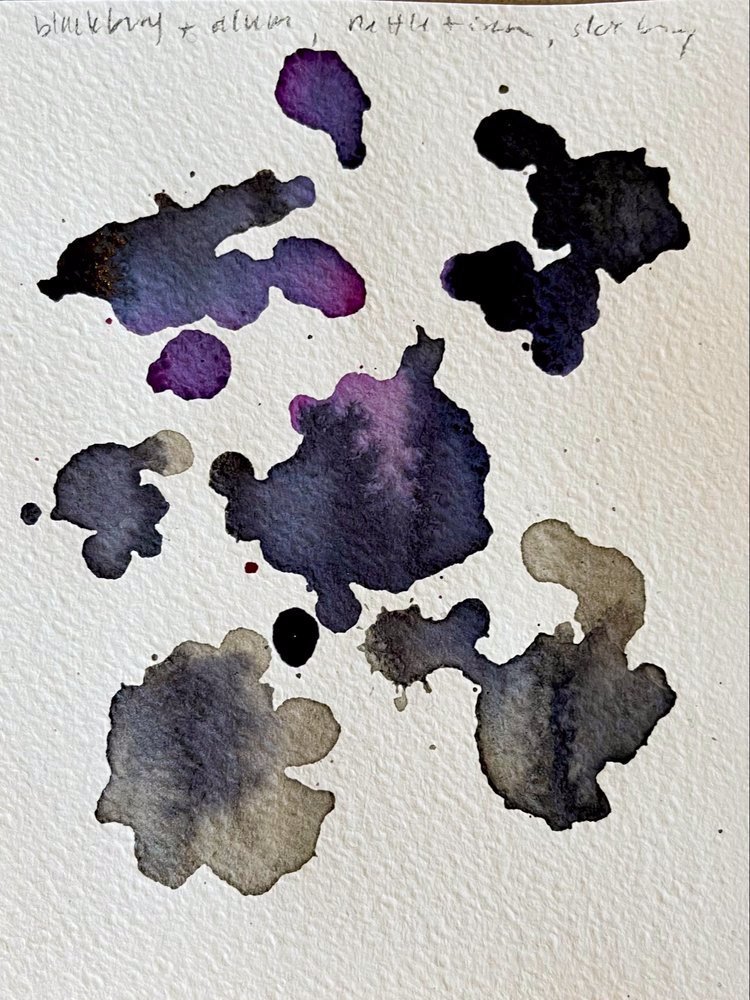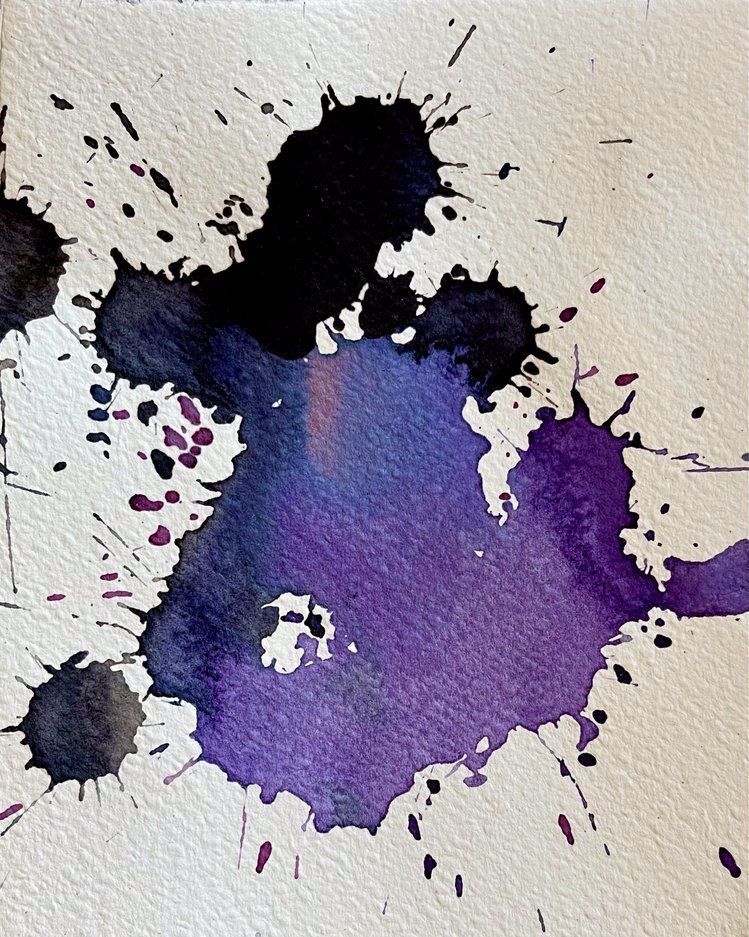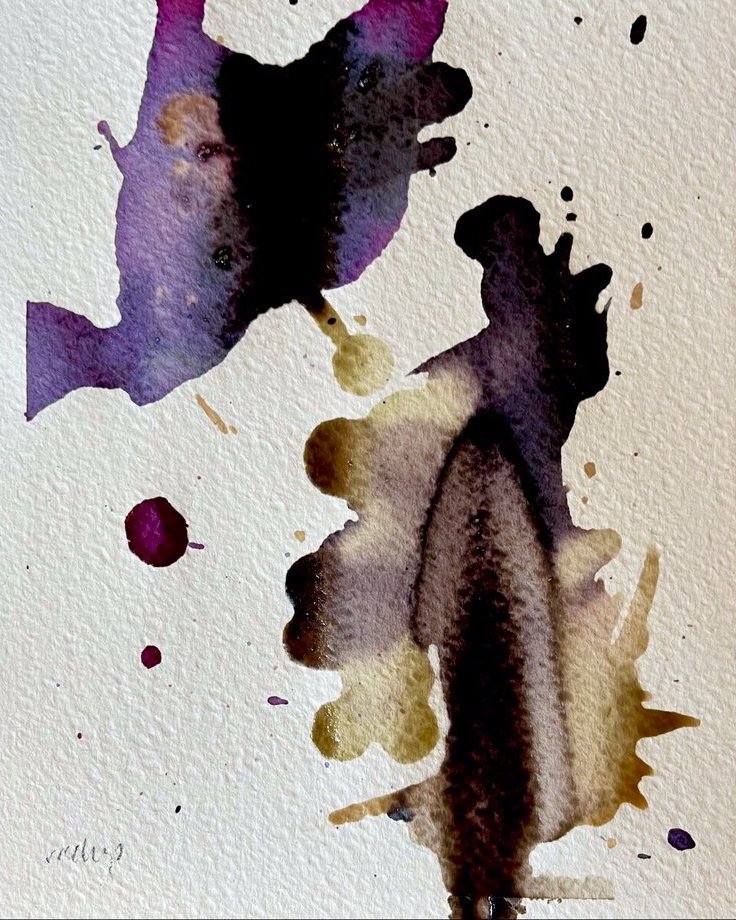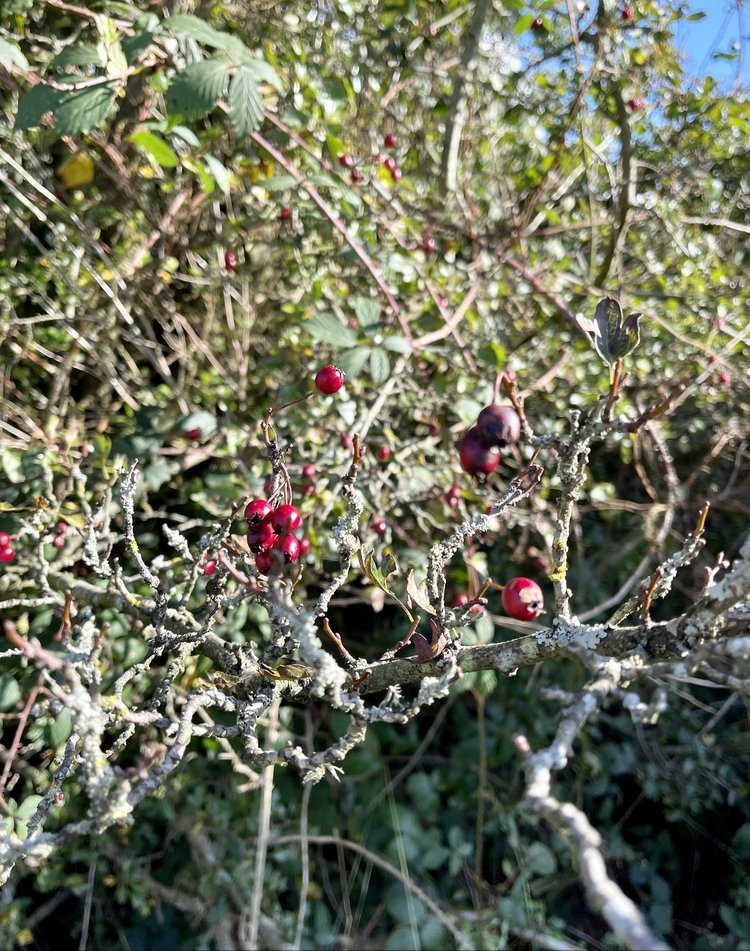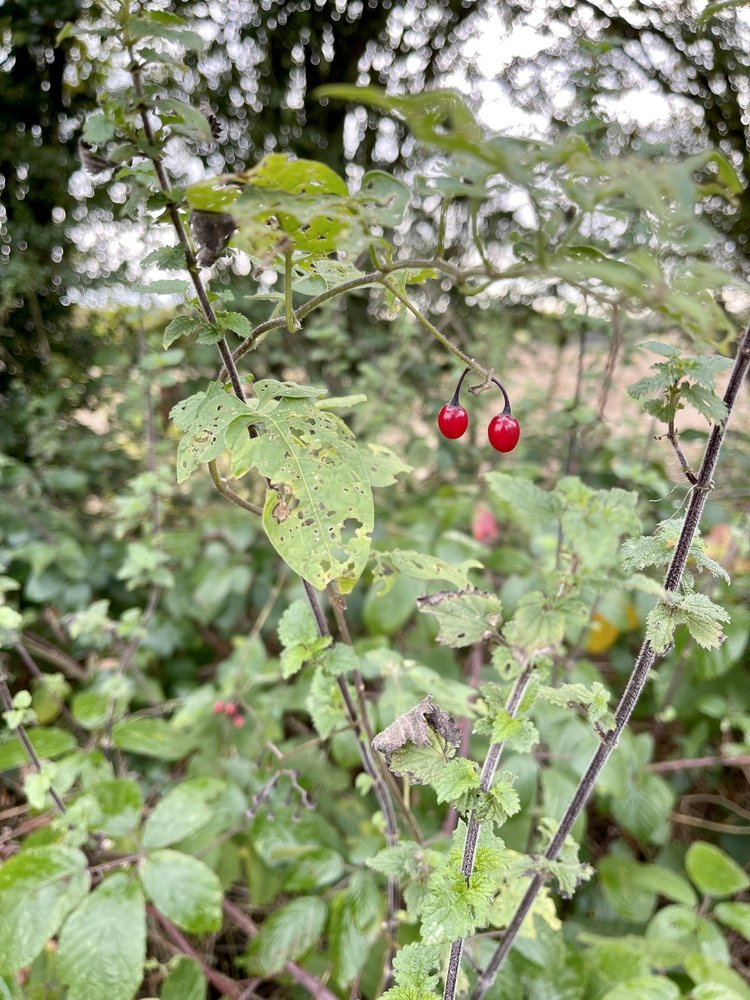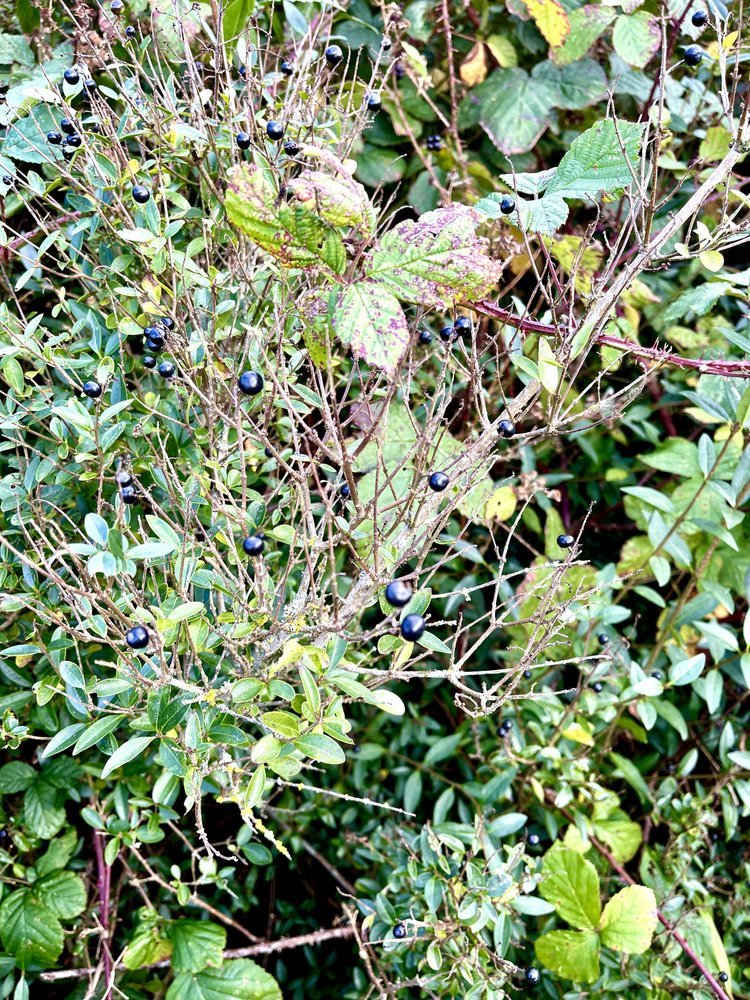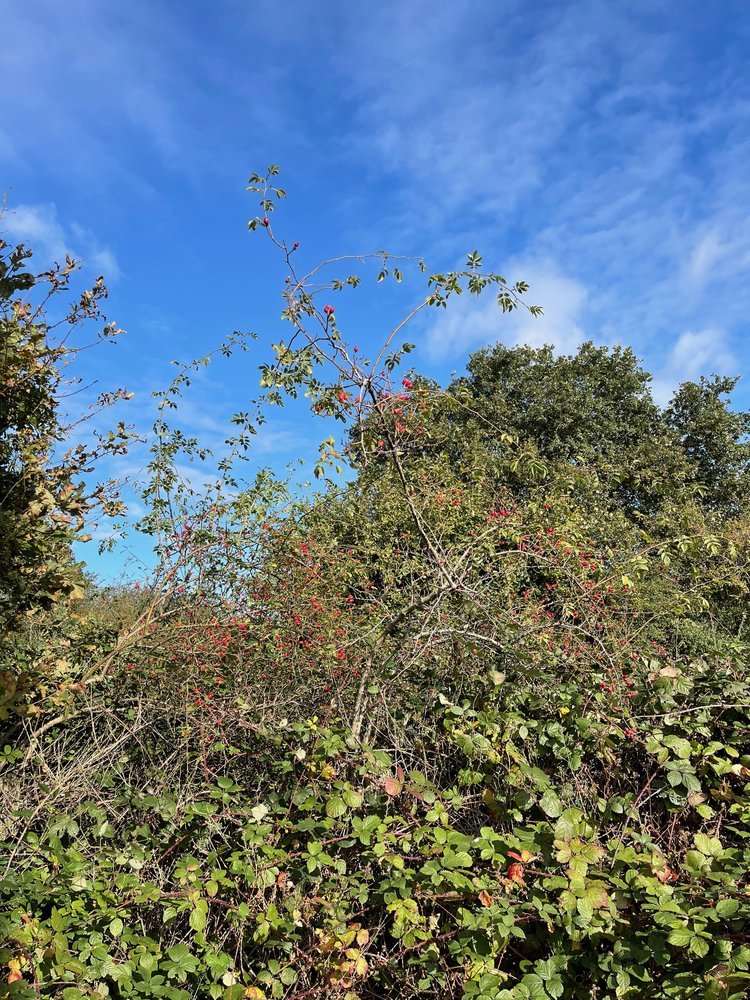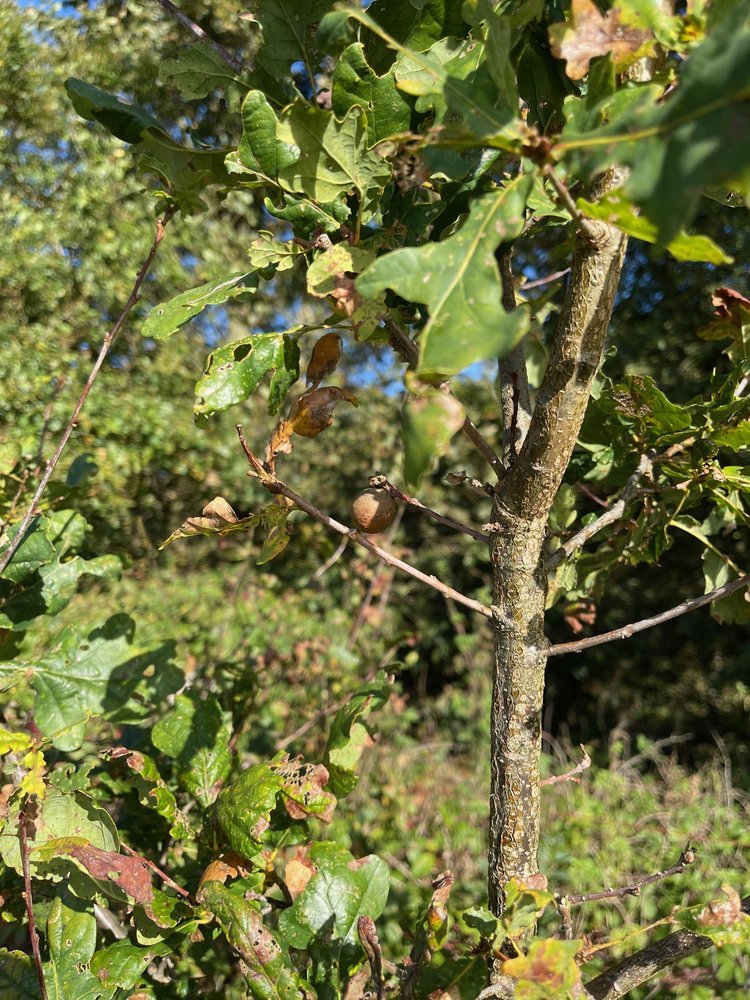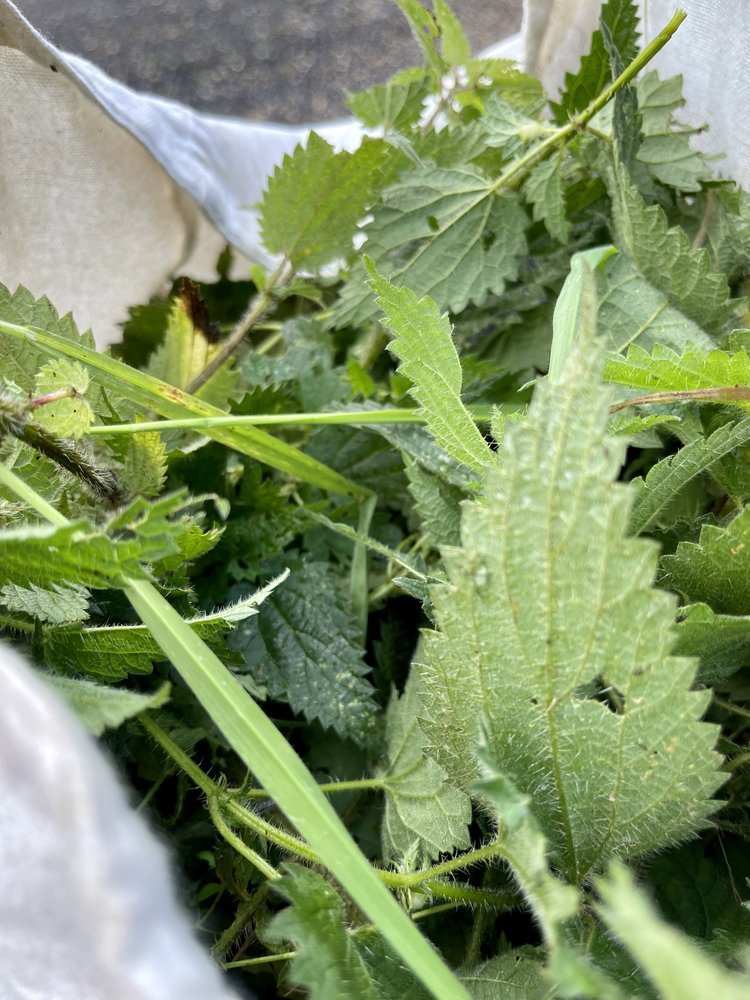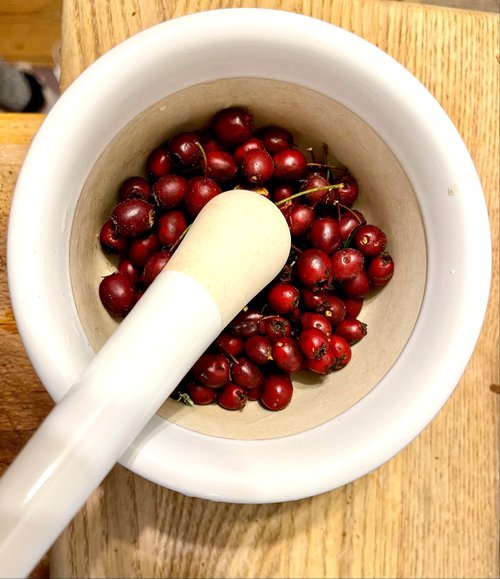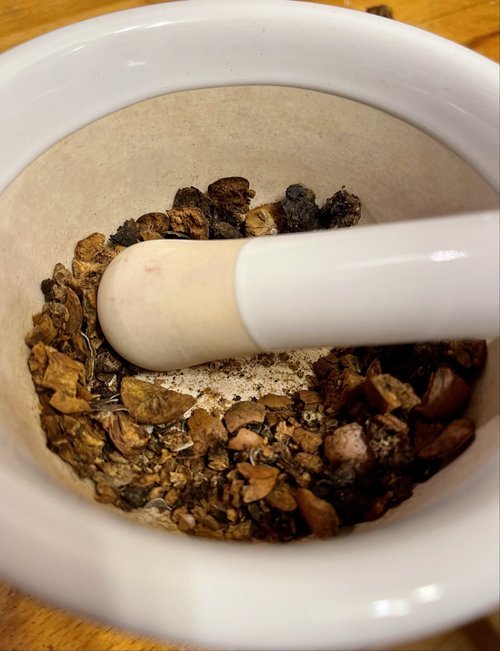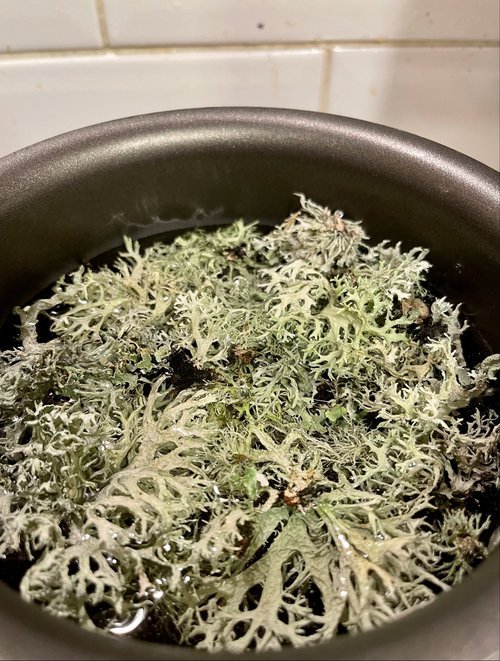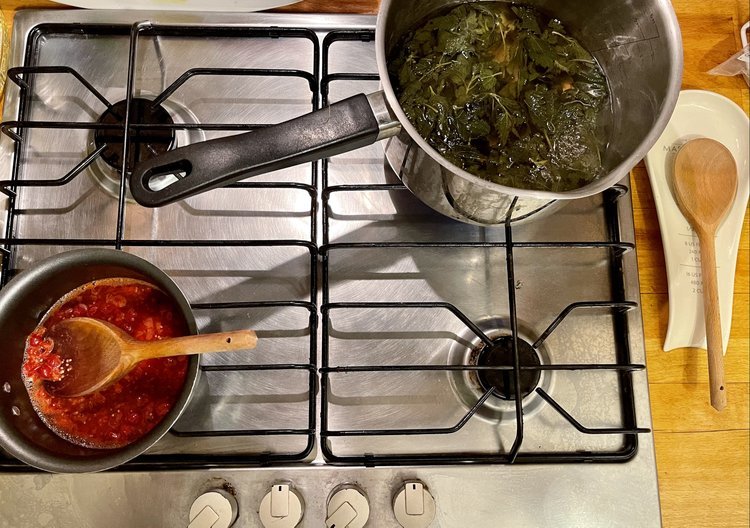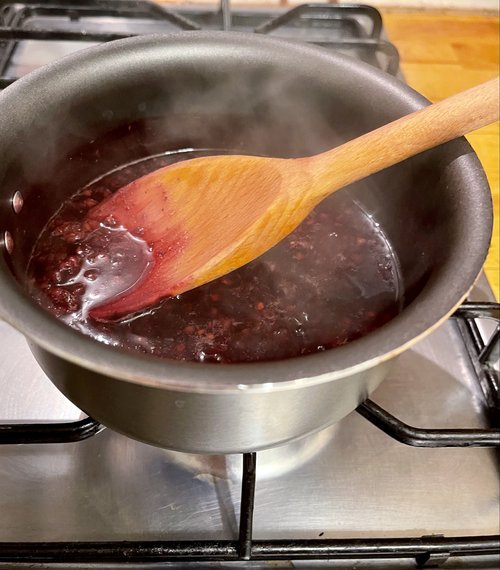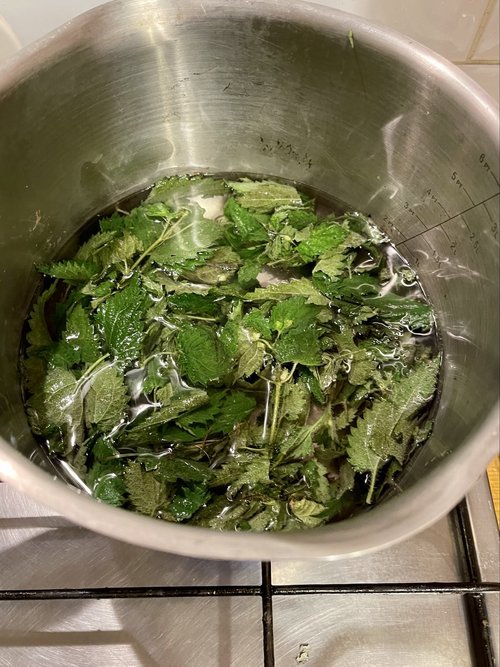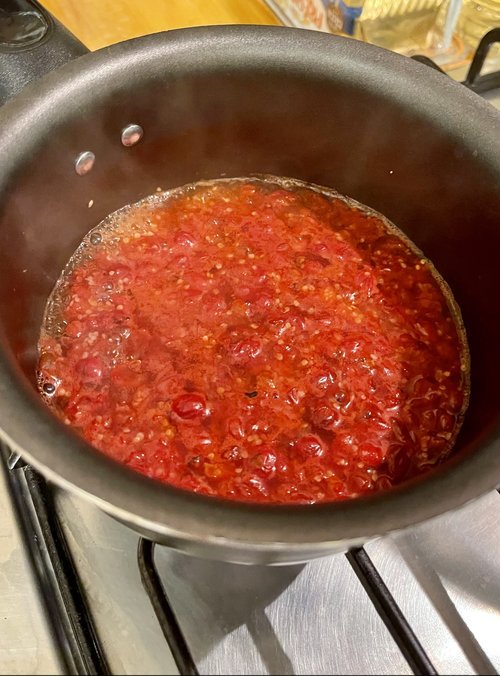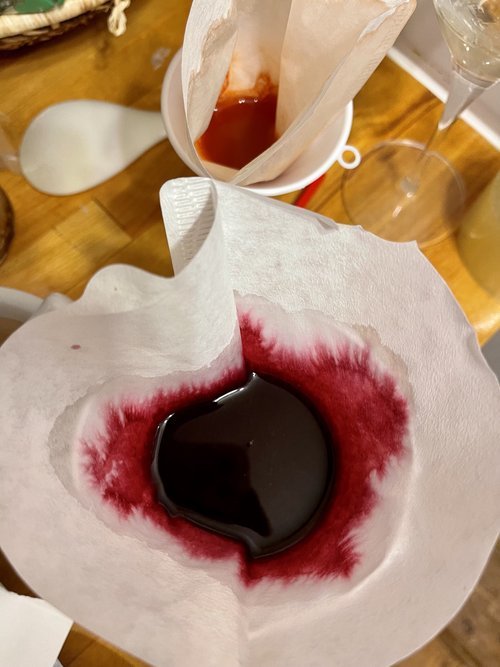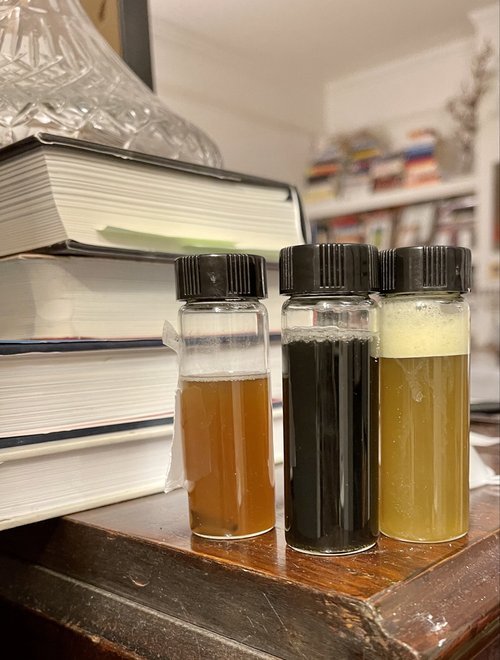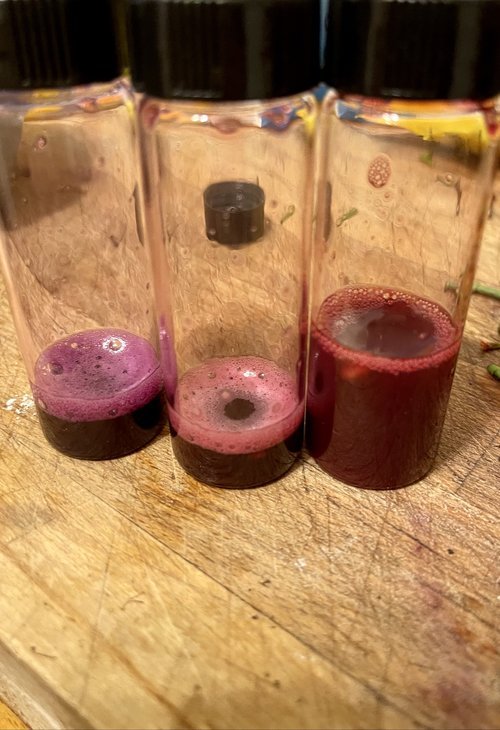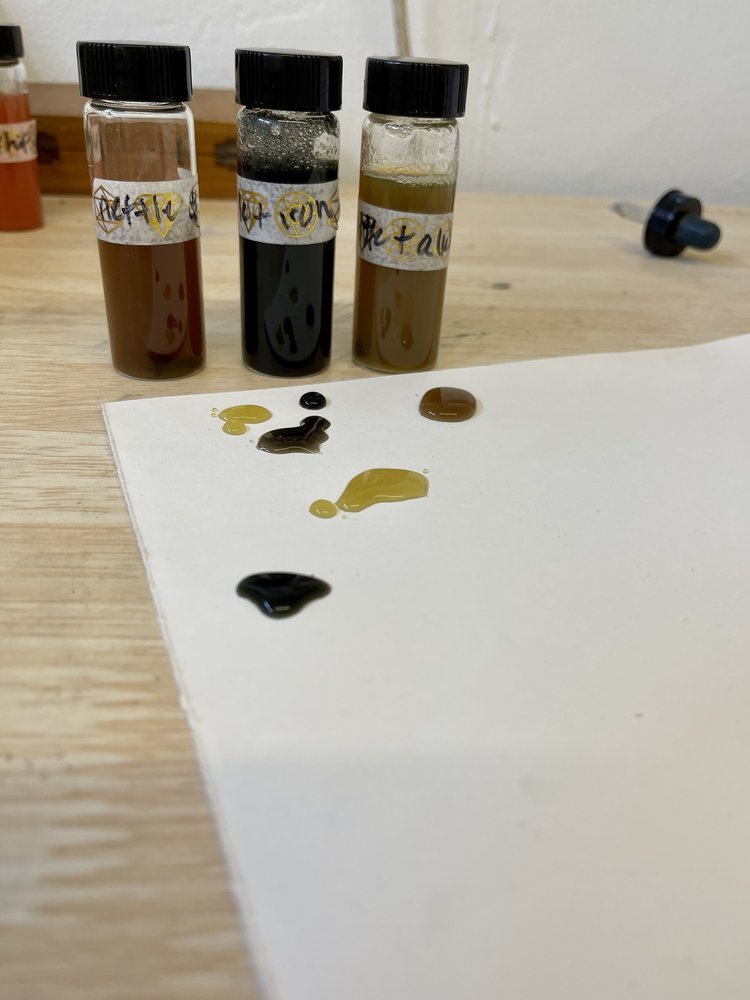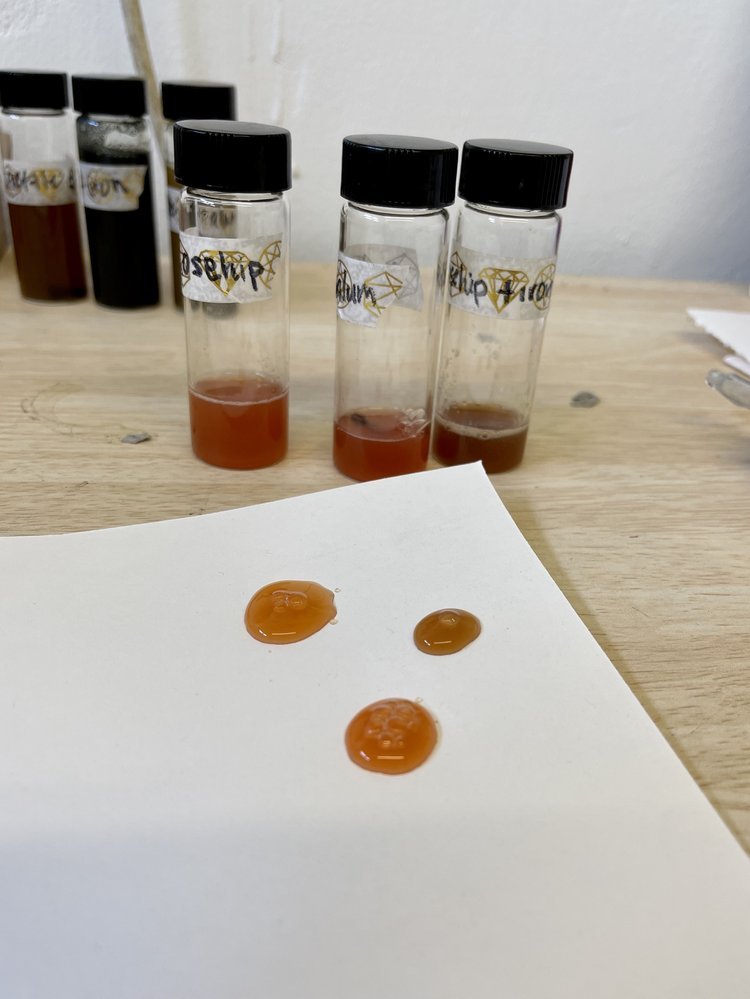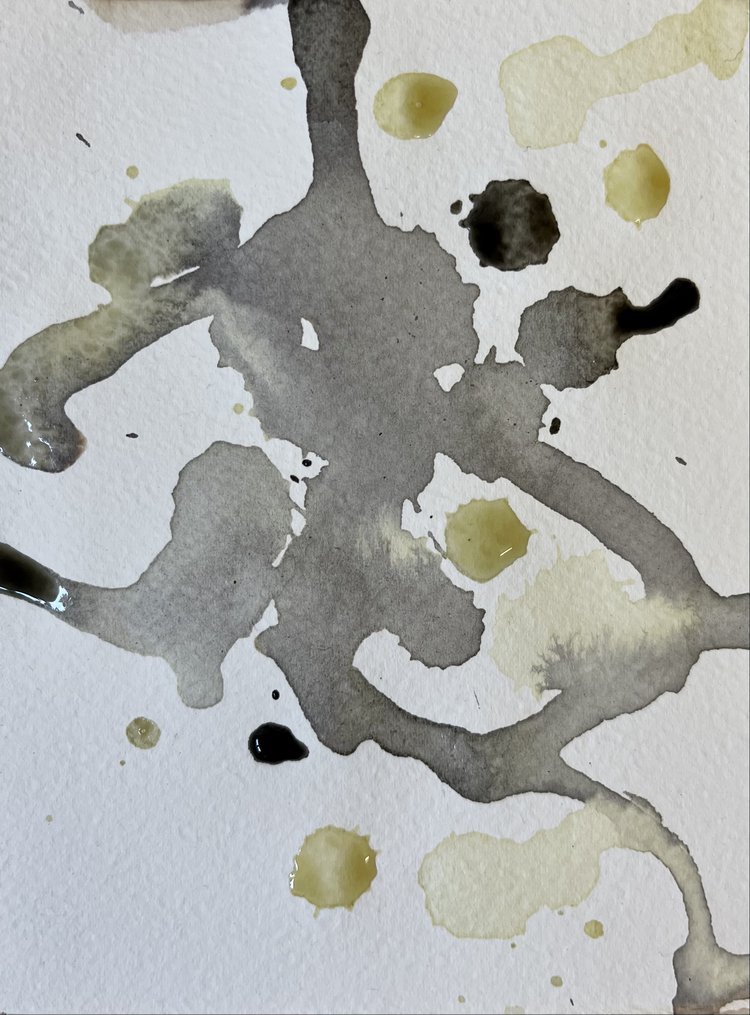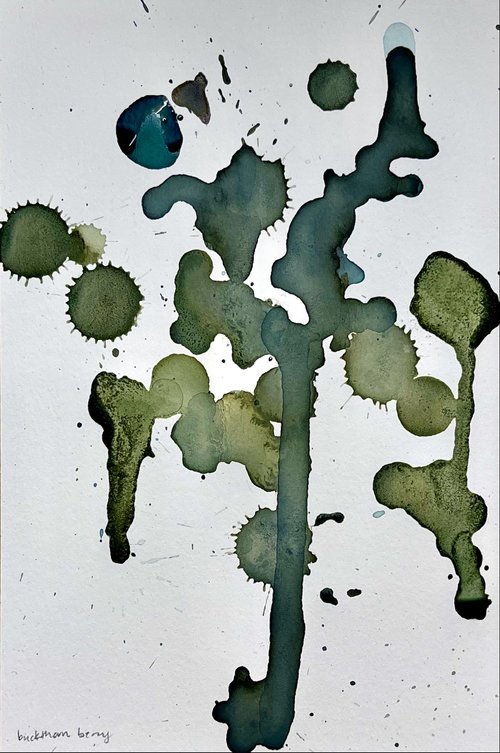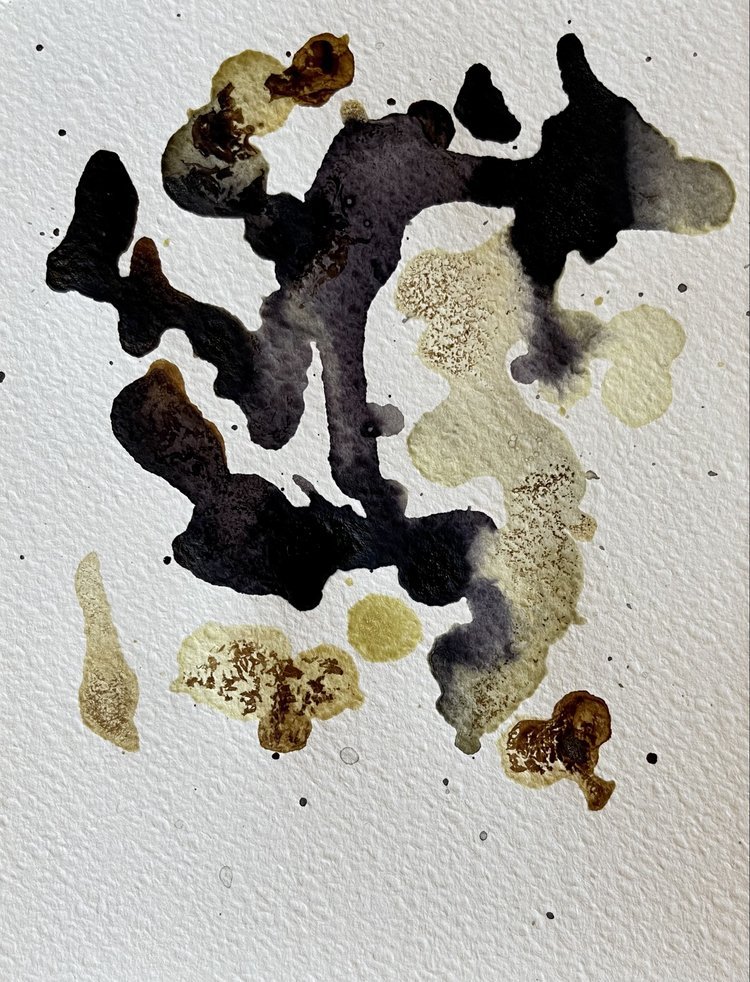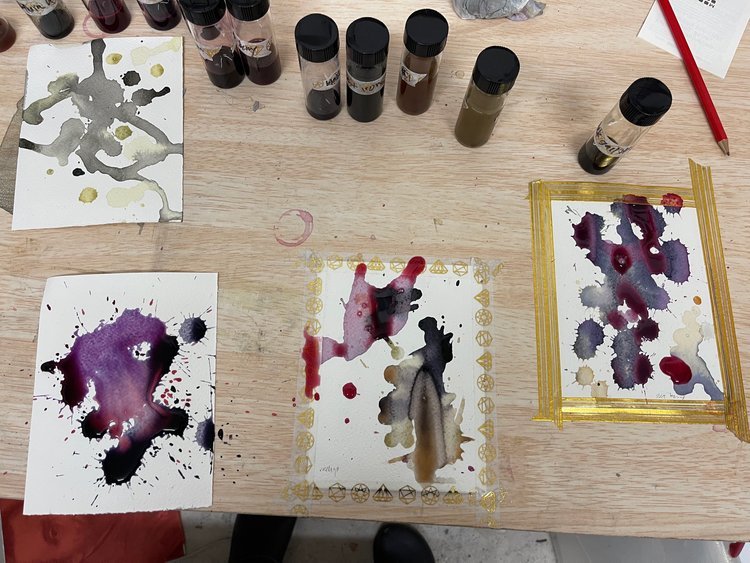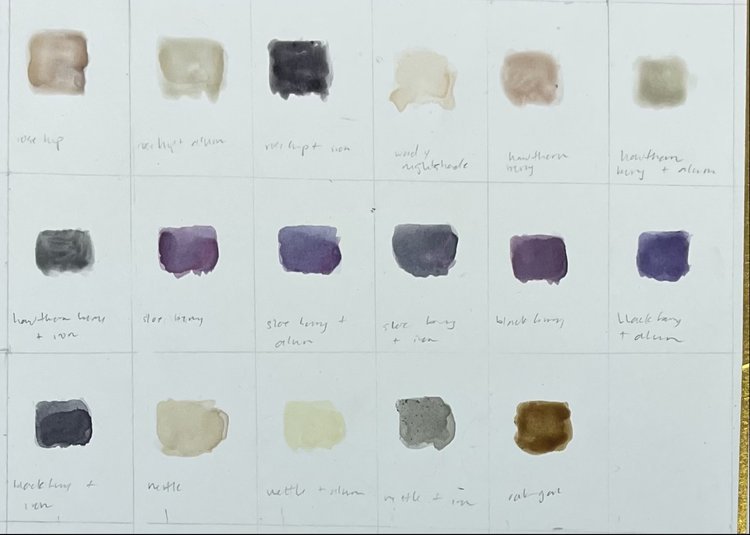On Inks and Leaves
This post will focus on the foraging, making, and experimenting with inks I have done over the past few weeks.
foraging notes
I began by researching, reading, and gathering information. This included better acquainting myself with what natural ingredients are present on the farm. As I read more into what other artists are using for ink, the more I realised that I could potentially use almost anything. Which is both exciting and slightly overwhelming.
Here is a list of a few of the Instagram accounts I have recently started following and found both inspiring and informative :
I chose to first experiment with oak gall ink and lichen. These I both expected to be easily found on the farm and knew they are both traditionally used in ink and dye making. Once I decided on a starting point for experimenting, I made several walks around the farm to gather material. I was rather disappointed to realise that the oak galls were much harder to find than I had expected. There are plenty of oaks around the property, but I only managed to find a few oak galls on a small patch of trees at the far end of one of the fields. I’m curious if it was a bad year for the wasps that make the galls, or if they are generally harder to find than I thought. Which made me wonder how all those medieval monks gathered enough oak galls to make their manuscripts. However, finding a good amount of lichen was significantly easier. The type of lichen I gathered is commonly called oakmoss and is especially plentiful on the cherry trees.
After this initial walk where, I decided to do a bit more research on what materials I might use, and then go for a longer walk with less specificity in mind. I knew there were still some berries about that I could attempt to make inks with and went for an exploration of the hedges forming the perimeter of the farm. This led to a collection of blackberries, woody nightshade, sloe berries, hawthorn, and rosehips.
ink making notes
In the majority of my reading I found a basic recipe of boiling the material in water, adding salt and vinegar, filtering it down, and then adding gum arabic. The various amounts and timings for each of these steps varied on material used and desired intensity. This seemed fairly straightforward and intuitive, but I quickly realised this was not the case. I still have yet to figure out quite how to alter and test the intensity (which I thought would be obvious… but after managing to burn several berries but still have a rather watery ink, I decided perhaps isn't as obvious). Once I managed to achieve an inky looking substance, I strained out the natural material and then filtered that once more through a coffee filter. This I poured into glass vials with gum arabic and a clove as a natural preservative.
The colour the natural materials produce is not always in line with what I expect. On some level this doesn’t surprise me, yet in actually making the inks, it often did. For example, the colour of the woody nightshade berry is a very vibrant orangish red. The ink it produces however, was a rather pale orange colour. The buckthorn berry was perhaps the most surprising to me- the skin of the berry is a deep blue colour, but it gives an amazing green shade of ink.
experimenting in the studio
I am still experimenting with the inks; especially when it comes to figuring out the correct ratios of ink to gum arabic. Some of the inks have too much, making them overly sticky. Admittedly, I have not been very exacting in my procedure, and as I enter a second round of experiments, I intend to be more exact and better document my process.
After I had mixed up several inks, I took them to the studio and played around with them by using a dropper and watching how the ink splattered on the page. By using a dropper rather than a brush to move the inks around on the paper, I saw how the ink moved more naturally on its own and in response to the addition of water or other inks. It seemed to have a life of its own.
I then decided to experiment with adding mordants. So far, I have used only alum and ferrous sulphate. I was surprised by some of the profound differences to the colour I got with these interactions. It was utterly fascinating: with a few materials, the addition of mordant did not make much of a difference, but with others, the difference was intense. When I had made up the nettle ink, I was rather disappointed in the result that looked like gross vaguely green muddy water. However, when I added alum to the ink, much to my surprise and satisfaction, it developed into a gorgeous spring green colour.
conclusions
Working with the inks is totally unpredictable. I’m sure part of that is because I am a novice, though suspect a large part is also due to the fact that working with natural material is always unpredictable. By working with these materials, I have started to feel closer to the land, as if I understand it better in some small way.
The experience of creating natural inks has brought up questions of perception and what it means to ‘capture’ something’s colour. What is the ‘true’ colour of the plant? Is it the colour that is perceived as it grows in the wild? Or is it the colour of ink the plant makes? This calls into question the differences in perception of colour as well as integrity in portraying colour. If I use artificial ink or paint in depicting the material as it appears in nature, is that more accurate or are the ink blots I make using the ink of the plant more accurate? in a way both are true representations of the material’s colour.
These are just some beginning questions and thoughts that I want to do more work thinking and writing about.

